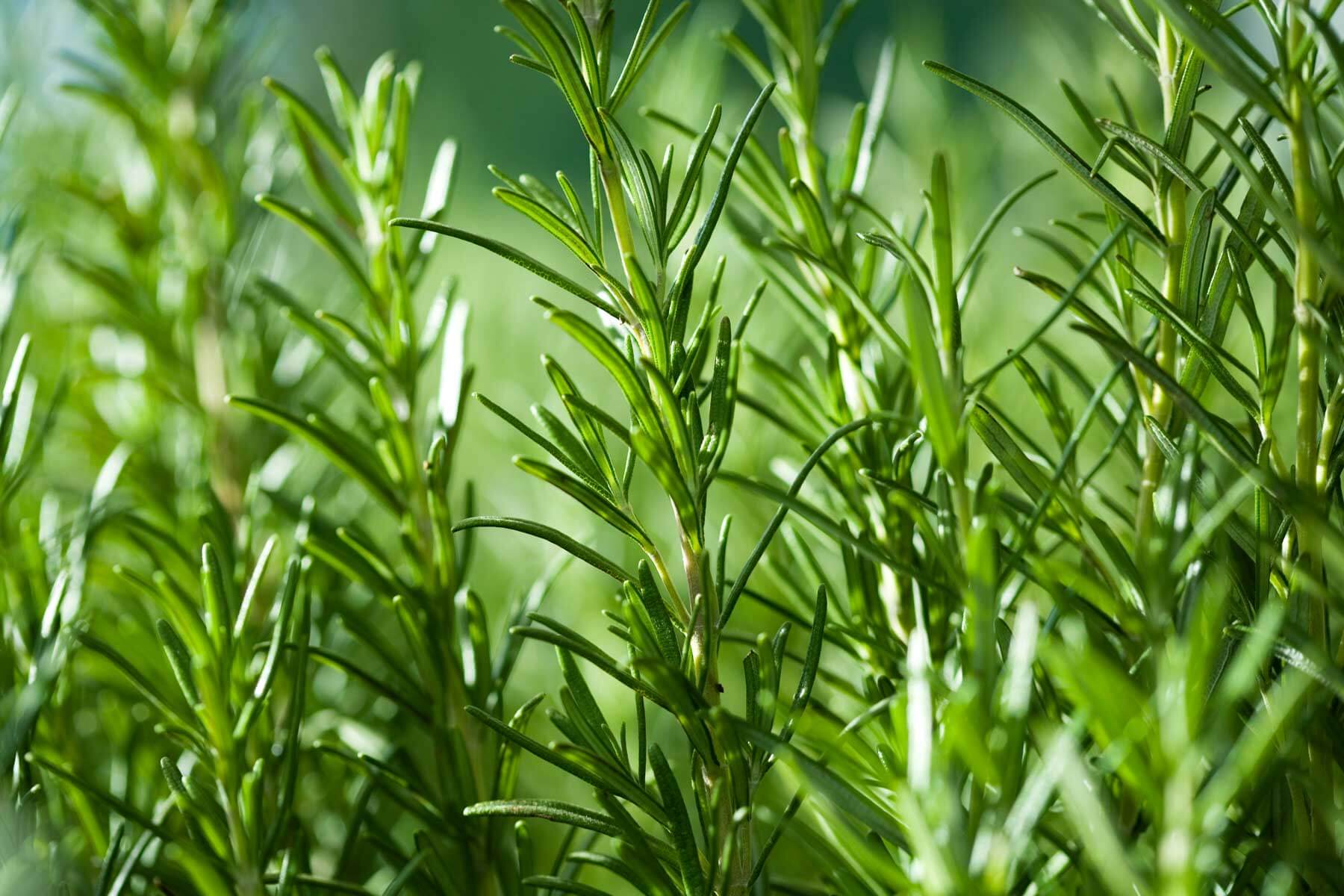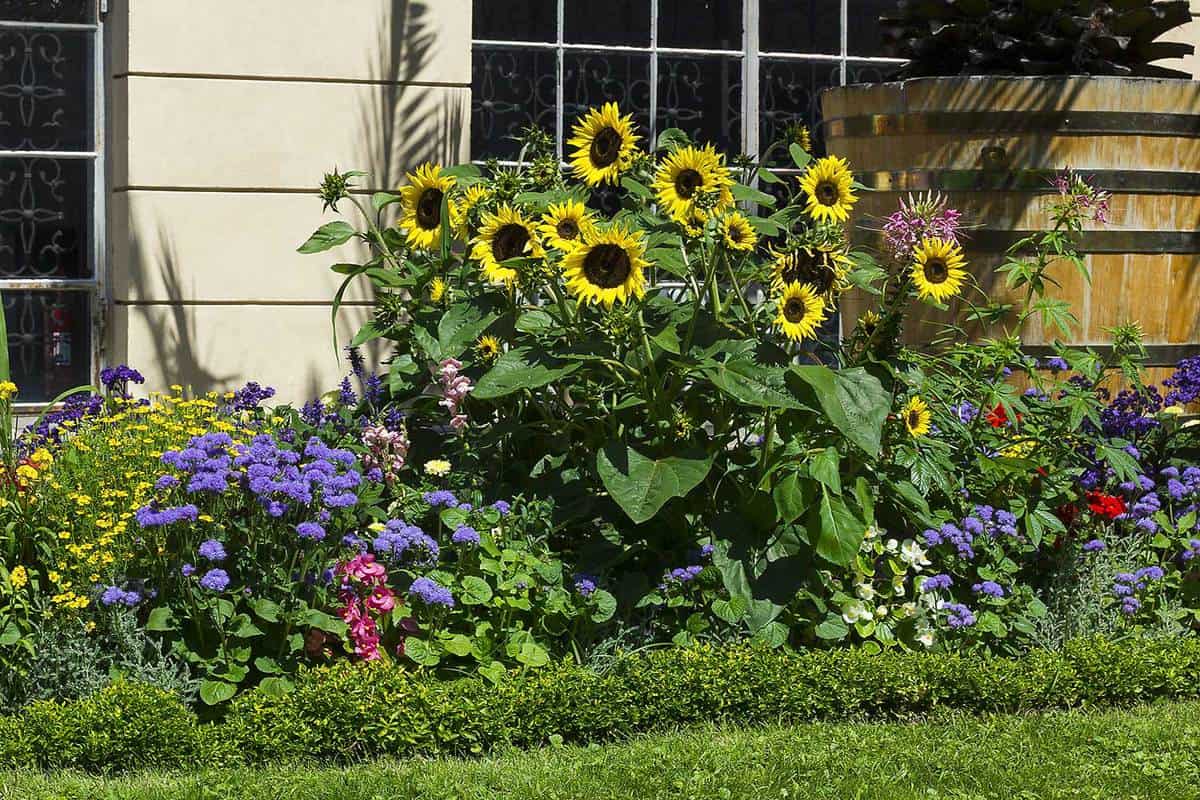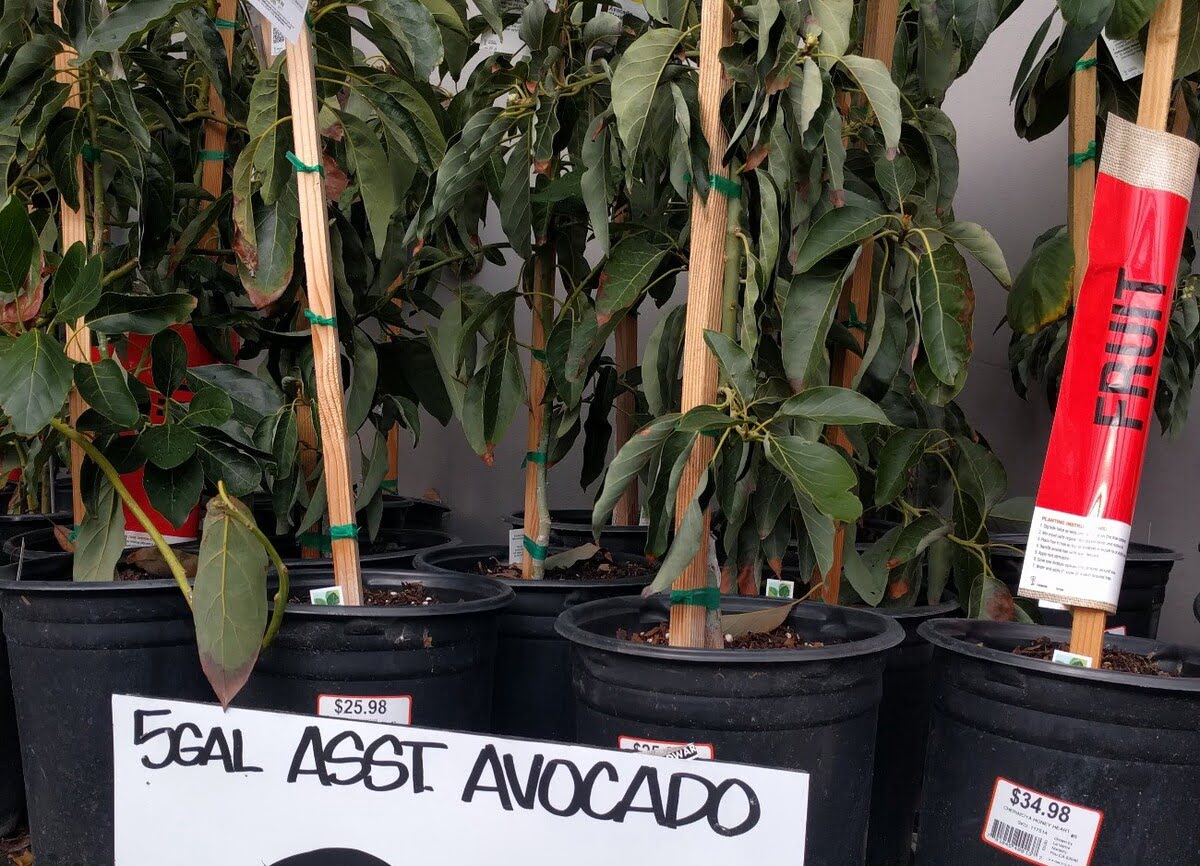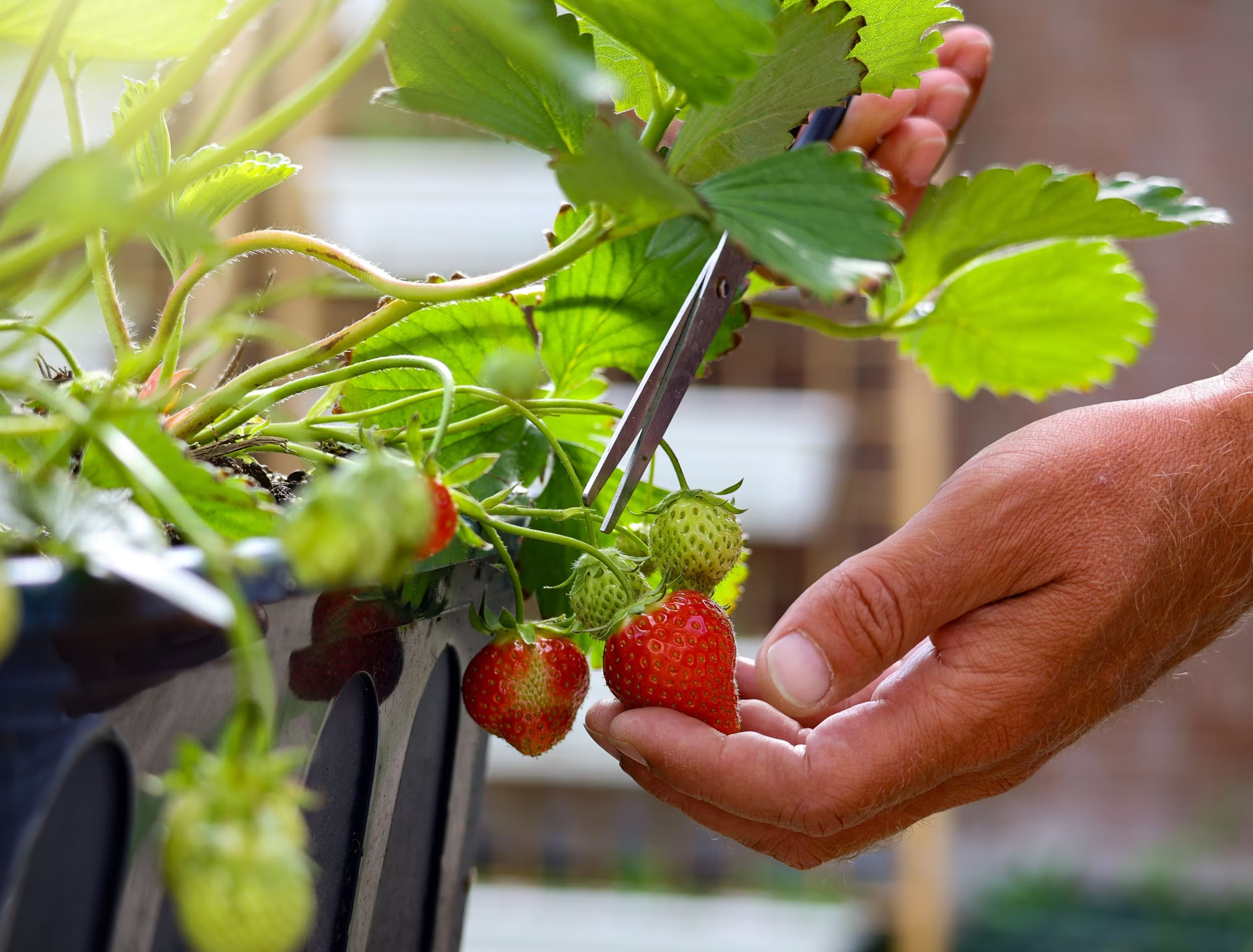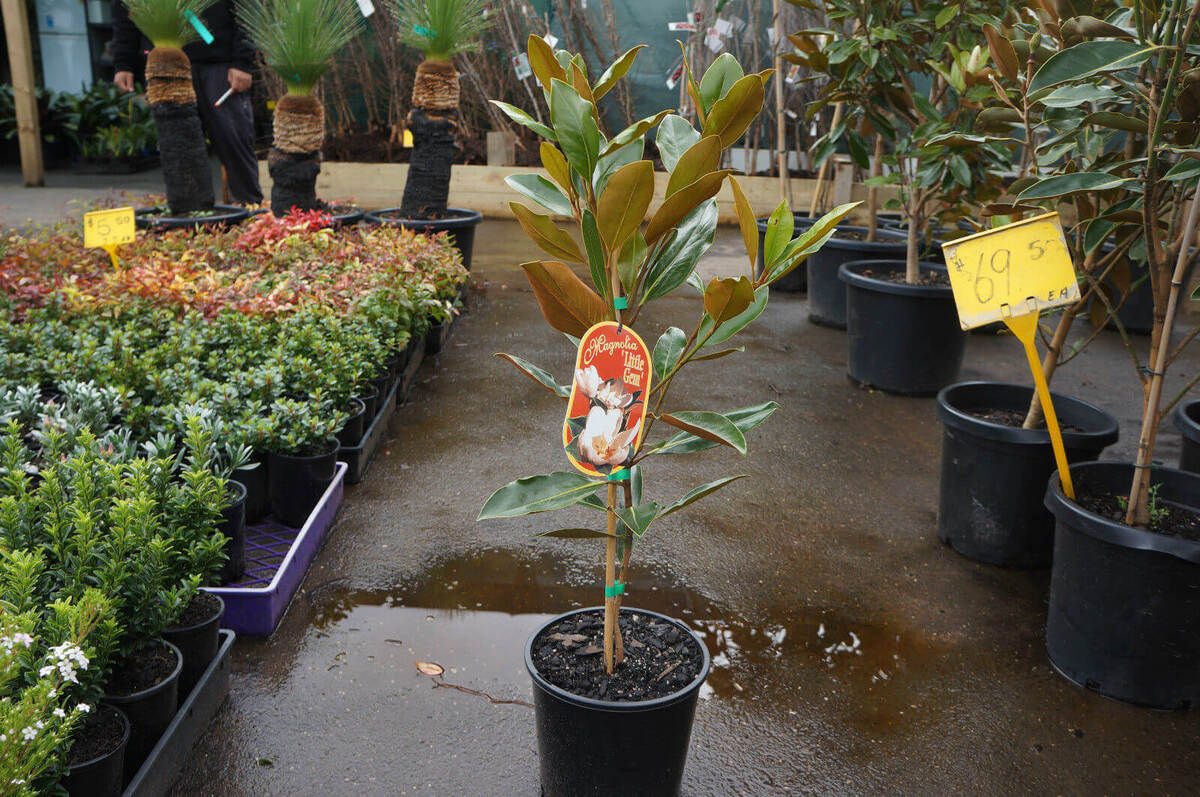Home>Gardening Tips and Tricks>Eco-Friendly Gardening>Planting A Tree Where One Was Removed


Eco-Friendly Gardening
Planting A Tree Where One Was Removed
Modified: January 22, 2024
Looking for eco-friendly gardening tips? Learn how to plant a tree in place of a removed one and contribute to a greener environment.
(Many of the links in this article redirect to a specific reviewed product. Your purchase of these products through affiliate links helps to generate commission for Chicagolandgardening.com, at no extra cost. Learn more)
Table of Contents
Introduction
Welcome to the wonderful world of Eco-Friendly Gardening! If you’re passionate about gardening and want to make a positive impact on the environment, then eco-friendly gardening is the way to go. One of the key aspects of eco-friendly gardening is planting and caring for trees, as they provide numerous benefits to our ecosystem. In this article, we will explore the process of replanting a tree after it has been removed, and discuss the importance of this practice in maintaining a healthy and sustainable environment.
There are various reasons why a tree may need to be removed from a property. It could be due to disease, storm damage, encroachment on structures, or simply because it has reached the end of its natural lifespan. Whatever the reason, it is essential to replace the removed tree with a new one to ensure the ecosystem continues to thrive.
Replanting a tree not only restores the beauty of the landscape but also provides numerous benefits. Trees play a vital role in purifying the air, absorbing carbon dioxide, and releasing oxygen. They provide shade, reduce noise pollution, and act as a habitat for wildlife. By replanting a tree, you are actively contributing to the preservation of the environment and creating a healthier and more sustainable future.
But how do you choose the right tree to replant? What steps should you take to prepare the planting site? And how do you ensure the newly planted tree thrives? Fear not! In the following sections, we will answer all these questions and provide you with practical tips to successfully replant a tree and care for it in an eco-friendly manner.
Reasons for Removing a Tree
There are various reasons why removing a tree becomes necessary. It could be due to disease, storm damage, encroachment on structures, or simply because it has reached the end of its natural lifespan. Let’s explore some common reasons why trees are removed:
- Disease: Trees can become infected with various diseases and pests, compromising their health and structural integrity. If these diseases are left untreated, they can spread to other trees, leading to widespread damage. In such cases, it is necessary to remove the affected tree to prevent further infestation.
- Storm Damage: Severe storms, such as hurricanes or tornadoes, can cause significant damage to trees. High winds, heavy rain, or lightning strikes can result in broken branches, split trunks, or complete uprooting of the tree. If a tree is severely damaged and poses a risk to nearby structures or individuals, it may need to be removed for safety reasons.
- Structural Issues: Trees with structural problems, such as large cavities, decay, or weakened branches, can become hazardous. These issues compromise the stability of the tree, increasing the risk of falling branches or the entire tree toppling over. In such cases, professional arborists may recommend removing the tree to prevent accidents and property damage.
- Natural Lifespan: Like all living organisms, trees have a natural lifespan. Different tree species have varying lifespans, but eventually, old age catches up with them. When a tree starts to show signs of decline and becomes weak, it may be necessary to remove it to avoid potential hazards.
- Urban Expansion: As urban areas expand, structures such as roads, buildings, and utility lines may encroach upon trees. If a tree’s growth poses a risk to the safety of these structures or affects their functionality, it may need to be removed or pruned extensively to accommodate urban development.
Tree removal is not a decision to take lightly, as trees are valuable assets to our ecosystem. However, when it becomes necessary to remove a tree, it is crucial to replace it with a new one to maintain the environmental balance and preserve the aesthetic beauty of our surroundings.
Benefits of Replanting
The act of replanting a tree after removal holds numerous benefits, both for the environment and our overall well-being. Let’s delve into the advantages of replanting:
- Environmental Benefits: Trees are often referred to as the lungs of the Earth. By absorbing carbon dioxide and releasing oxygen through the process of photosynthesis, trees help reduce greenhouse gas emissions and combat climate change. Replanting trees can contribute to carbon sequestration, helping to mitigate the effects of global warming. Additionally, trees provide habitats for wildlife, promote biodiversity, and improve air and water quality.
- Aesthetic Enhancement: Trees add beauty and visual appeal to any landscape. They provide shade, create a sense of tranquility, and enhance the overall aesthetic value of an area. Replanting a tree can help maintain the natural beauty of a location and create a more inviting and pleasant environment for residents and visitors alike.
- Shade and Energy Efficiency: Trees provide shade, reducing the heat island effect in urban areas and lowering energy consumption. By strategically planting trees around buildings, you can create natural shade that reduces the need for air conditioning during hot summer months. This, in turn, helps conserve energy and lowers utility bills.
- Noise Reduction: Trees can act as a natural sound barrier, absorbing and deflecting sound waves. By replanting trees in areas with high noise levels, such as near highways or busy streets, you can create a more peaceful and serene environment. This is particularly beneficial for homes, schools, and other establishments where noise reduction is important.
- Health and Well-being: Being surrounded by nature, including trees, has a positive impact on our mental and physical well-being. Research has shown that exposure to green spaces, such as parks with abundant trees, can reduce stress, improve mood, and enhance cognitive function. Replanting trees not only benefits the environment but also contributes to improving the overall health and happiness of individuals in the community.
Replanting a tree is a small yet impactful step towards creating a more sustainable and thriving environment. The benefits extend beyond the immediate surroundings and have a positive ripple effect on a larger scale. By actively participating in the replanting process, you are contributing to the preservation of our planet and ensuring a greener, healthier future.
Choosing the Right Tree
When it comes to replanting a tree, selecting the right species is crucial for its long-term success. Here are some factors to consider when choosing the right tree:
- Climate and Hardiness: Consider the climate in your area and choose a tree species that is well-suited to thrive in those conditions. Look for trees that are native or adapted to your region, as they are more likely to withstand local weather extremes and diseases.
- Size and Shape: Consider the available space and the tree’s ultimate size at maturity. Avoid planting trees that will outgrow the area or interfere with nearby structures, power lines, or underground utilities. Select a tree with a shape and form that complements the landscape and meets your aesthetic preferences.
- Soil Requirements: Assess the soil composition in your planting site. Some trees prefer well-drained soil, while others can tolerate moist or clay soils. Understanding the soil conditions will assist in selecting a tree that is compatible with those requirements.
- Purpose: Determine the purpose of the tree – whether it is for shade, ornamental value, fruit production, or wildlife habitat. Different tree species offer various benefits, so choose one that aligns with your goals and desired outcomes.
- Maintenance Needs: Consider the maintenance requirements of the tree, such as pruning, watering, and fertilizing. Some trees require more care and attention than others. If you prefer low-maintenance options, choose a tree that fits that criteria.
- Native Species: Whenever possible, choose native tree species. Native trees have adapted to the local ecosystem and provide optimal benefits for the environment, including food and shelter for native wildlife.
When selecting a tree, it is advisable to consult with local nurseries, arborists, or horticulture experts who can provide guidance based on their knowledge of the area and tree species. They can help you choose a tree that suits your specific needs, considering the local climate, soil conditions, and space available for planting.
Remember, choosing the right tree is an important step in the replanting process. By selecting a tree that is well-suited to its environment, you are ensuring its success and contributing to a healthier and more sustainable ecosystem.
Preparing the Planting Site
Properly preparing the planting site is essential for the successful establishment and growth of a newly replanted tree. Here are some important steps to follow when preparing the planting site:
- Choose the Location: Select a suitable location for the tree, taking into consideration its size at maturity, sunlight requirements, and proximity to other vegetation or structures. Ensure that the tree will have enough space to spread its roots and canopy as it grows.
- Clear the Area: Remove any grass, weeds, or debris from the planting site. These competing plants can hinder the tree’s growth and limit access to necessary nutrients and water.
- Loosen the Soil: Loosen the soil in the planting area to improve drainage and allow for root penetration. Use a garden fork or tiller to break up compacted soil, ensuring that it is loose and friable for the roots to establish easily.
- Amend the Soil: Test the soil pH and nutrient levels and amend it if necessary. Most trees prefer a slightly acidic to neutral soil pH, typically ranging from 6.0 to 7.5. Incorporate organic matter, such as compost or well-rotted manure, to improve soil structure and fertility.
- Dig the Planting Hole: Dig a hole that is wider and shallower than the root ball of the tree. The width should be two to three times the diameter of the root ball, allowing ample room for the roots to spread out. The depth should be equal to the height of the root ball or slightly shallower.
- Inspect the Root Ball: Carefully inspect the root ball of the tree before planting. Ensure that the roots are healthy, properly pruned, and not circling the root ball. If any roots are coiled or damaged, gently straighten or prune them to encourage proper root development.
- Planting Depth: Set the tree in the planting hole, making sure that the root collar is level with or slightly above the surrounding soil. Avoid planting the tree too deep, as this can lead to suffocation of the roots and hinder the tree’s growth.
- Backfill and Water: Backfill the hole with the loosened soil, firming it gently around the roots to remove air pockets. Create a shallow basin around the tree to retain water. Water the newly planted tree thoroughly to settle the soil and ensure good root-to-soil contact.
By properly preparing the planting site, you are providing the newly replanted tree with the best possible start. This allows the roots to establish themselves and promotes healthy growth and development in the long run.
Planting the New Tree
Planting a new tree is an important process that requires proper technique and care to ensure its successful establishment. Follow these steps when planting a new tree:
- Timing: The best time to plant a new tree is during the dormant season, typically in late fall or early spring when the weather is cool and the tree is not actively growing. Avoid planting during extreme weather conditions.
- Prepare the Root Ball: If the tree is in a container, gently tap the sides of the container to loosen the root ball. If the tree is balled and burlapped, remove the burlap and any twine around the trunk, ensuring that the top of the root ball is visible.
- Prepare the Hole: Dig a planting hole that is wider and shallower than the root ball. The width should be two to three times the diameter of the root ball. The depth should be equal to or slightly shallower than the height of the root ball.
- Place the Tree: Carefully place the tree in the center of the hole, ensuring that the top of the root ball is level with or slightly above the surrounding soil. Adjust the placement if needed.
- Backfill and Tamp: Backfill the hole with the soil and gently tamp it down to remove air pockets. Ensure that the tree remains straight and upright during the process. Avoid compacting the soil too tightly, as it can hinder root growth.
- Create a Watering Basin: Build a shallow watering basin around the base of the tree to hold and direct water towards the roots.
- Water the Tree: Water the newly planted tree thoroughly, soaking the soil around the roots. This helps settle the soil and ensures good root-to-soil contact. Continue to water regularly during the first year, especially during dry periods.
- Apply Mulch: Apply a layer of organic mulch, such as wood chips or bark, around the base of the tree. This helps retain moisture, suppresses weeds, and moderates soil temperature. Avoid piling mulch against the trunk, as it can cause root rot and other issues.
- Stake if Necessary: If the tree is tall or vulnerable to wind, secure it with stakes and ties to provide stability. Be sure to use soft materials, such as tree straps or fabric, and adjust the tension to allow for some movement.
Properly planting a new tree creates a strong foundation for its growth and ensures its long-term health and vitality. By following these steps, you are giving the tree the best chance of thriving in its new environment.
Caring for the Newly Planted Tree
After planting a new tree, it is crucial to provide proper care to ensure its successful establishment and long-term growth. Here are some essential steps for caring for a newly planted tree:
- Watering: Adequate watering is essential for the tree’s survival and root development. Water the tree deeply and evenly, ensuring that the root ball and surrounding soil are moist, but not waterlogged. Monitor the soil moisture regularly and adjust the watering frequency depending on weather conditions.
- Mulching: Apply a layer of organic mulch around the base of the tree, keeping it a few inches away from the trunk. This helps conserve moisture, suppresses weed growth, and regulates soil temperature. Maintain a depth of 2-4 inches of mulch and replenish it as needed.
- Pruning: Pruning is not necessary for a newly planted tree, except for removing damaged, broken, or diseased branches. Wait until the tree has established strong roots and has entered its dormant period before performing any significant pruning.
- Fertilizing: In most cases, newly planted trees do not require immediate fertilization. The enriched soil used during planting should provide sufficient nutrients. However, if the soil lacks essential nutrients, a slow-release or organic fertilizer can be applied in the second or third year after planting.
- Weeding: Regularly check the planting area for weeds and remove them promptly. Weeds can compete with the tree for nutrients and water, hindering its growth. Be careful when weeding around the tree to avoid damaging the roots.
- Protection: Protect the tree from potential threats such as pests, wildlife, and lawn equipment. Use fencing, tree guards, or trunk wraps to shield the tree from physical damage.
- Monitoring: Keep a close eye on the tree’s overall health and appearance. Look for signs of stress, including wilting, discoloration, or pest infestation. Early detection and prompt action can prevent further damage and ensure the tree’s well-being.
- Continued Care: Remember that caring for a newly planted tree is not a one-time task. It requires ongoing attention and care, especially during its initial years of growth. Regularly check the soil moisture, address any issues promptly, and provide the necessary care to support the tree’s development.
With proper care, the newly planted tree will establish a strong root system and grow into a healthy and vibrant addition to your landscape. Be patient and consistent in your care, and enjoy watching your tree thrive and contribute to the beauty and environmental benefits of your surroundings.
Conclusion
Replanting a tree after its removal is not only an act of environmental responsibility but also a contribution to a greener and healthier world. Throughout this article, we have explored the reasons for tree removal, the benefits of replanting, the process of choosing the right tree, preparing the planting site, planting the new tree, and caring for it during its early stages of growth.
By replanting a tree, you are actively participating in the preservation of our environment and ecosystems. Trees provide numerous benefits, including improving air quality, reducing carbon dioxide levels, providing shade, enhancing the aesthetic beauty of landscapes, and supporting wildlife habitats. They also contribute to our physical and mental well-being, creating a more pleasant and serene environment.
When replanting a tree, it is crucial to choose the right species for your climate and planting site, prepare the site adequately, and provide proper care and maintenance. This involves watering the tree, applying mulch, pruning as needed, and protecting it from potential threats. With the right care, the newly planted tree can establish robust roots and grow into a majestic and valuable asset for years to come.
Remember to consult with local experts, such as arborists or horticulturists, for guidance and advice on species selection, planting techniques, and ongoing care. Their expertise will ensure that your replanted tree thrives and fulfills its potential in contributing to a sustainable and eco-friendly environment.
So, let’s embrace the power of eco-friendly gardening and make a positive difference by replanting trees. Together, we can create a greener, healthier planet for present and future generations.



